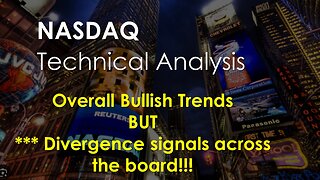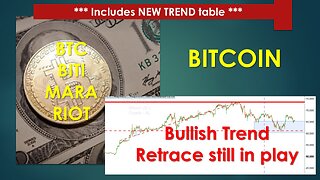Free Stock Market Course Part 33: Technical Analysis
Free File downloads
Course notes, Audio files, Assessments, Transcript files, and Course Outline: https://spxinvestingblog.com/downloads/
My Exclusive Free Workshop The Four P's of Building a Successful Investing Program → https://spxinvesting.mailchimpsites.com
Blog: https://spxinvestingblog.com
Facebook Public Group: https://www.facebook.com/groups/433843641082343
Technical Analysis of the Financial Markets: https://amzn.to/3BDDmDh
Chapters:
00:00 Technical Analysis TA
03:07 TA Assumptions
04:08 TA Implementation
09:07 The Consensus Approach
11:13 TA Flexibility
12:52 TA Drawbacks
16:48 The TA Bible Recommended Reading
Module 5 Section 6
Technical Analysis (TA)
Technical Analysis
Stocks and Indexes are evaluated based on identifying trading opportunities in current price trends and patterns observed on charts.
Past trading activity and price changes can be valuable indicators of future price movements.
Technical Analysis:
Assumes current prices reflect all known information
Focuses on the statistical analysis of price movements
Attempts to understand current market sentiment
Stocks and indexes have a random and non-randomness which can be measured and evaluated using Technical Analysis.
TA Assumptions
1. The markets discount everything
2. Prices move in trends much of the time
3. History will often repeat itself
These assumptions often can lead to self-fulfilling prophecies.
TA Implementation
Those who implement Technical Analysis use indicators, which are calculations of price and/or volume that seek insight for determining the likelihood of future price movement.
Thousands of indicators have been developed with the hope of uncovering unique insight.
Participants typically find and use their favorite indicators.
TA enthusiasts focus on:
Price trends
Chart patterns
Volume and momentum indicators
Oscillators
Moving averages
Support and resistance levels
The Conesus Approach
A new approach to Technical Analysis, developed by The SPX Investing Program, is taught.
The Consensus Approach (AKA, The Consensus Method)
Multiple popular indicators are used in conjunction with each other to give a broader view and evaluation of the S&P 500 Index.
TA Flexibility
Technical Analysis allows for different:
Markets
Time-frames
Adjustments, modifications, and experimentation.
Visual cues, which many participants find helpful.
TA Drawbacks
Technical Analysis can have disadvantages such as:
Analysis paralysis
Changing market climates
The never-ending search to find the perfect indicator
Inconsistency
Subjectivity, or a personalized style that is not easy to learn and implement
The TA Bible: Technical Analysis of the Financial Markets by John Murphy.
-
 34:42
34:42
The SPX Investing Program
2 years agoFree Stock Market Course Part 28: Market Analysis
1022 -
 14:37
14:37
The SPX Investing Program
2 years agoFree Stock Market Course Part 31: Fundamental Analysis
72 -
 4:47
4:47
Petes Investing
2 months agoNASDAQ Technical Analysis Mar 12 2024
29 -
 3:18
3:18
Petes Investing
6 months agoBITCOIN Technical Analysis Nov 27 2023
24 -
 2:49
2:49
Petes Investing
3 months agoNASDAQ Technical Analysis Feb 24 2024
50 -
 3:02
3:02
Petes Investing
6 months agoNASDAQ Technical Analysis Nov 27 2023
19 -
 3:08
3:08
Petes Investing
2 months agoBITCOIN Technical Analysis Mar 06 2024
9 -
 6:40
6:40
Petes Investing
2 months agoBITCOIN Technical Analysis Mar 05 2024
33 -
 5:01
5:01
Petes Investing
2 months agoBITCOIN Technical Analysis Mar 22 2024
22 -
 10:01
10:01
Petes Investing
2 months agoBITCOIN Technical Analysis Mar 11 2024
26